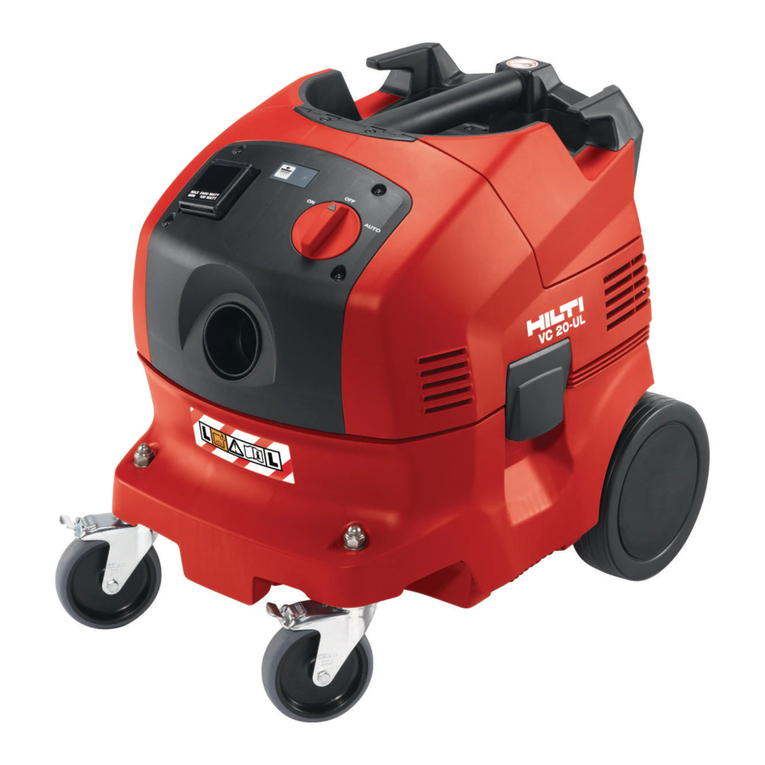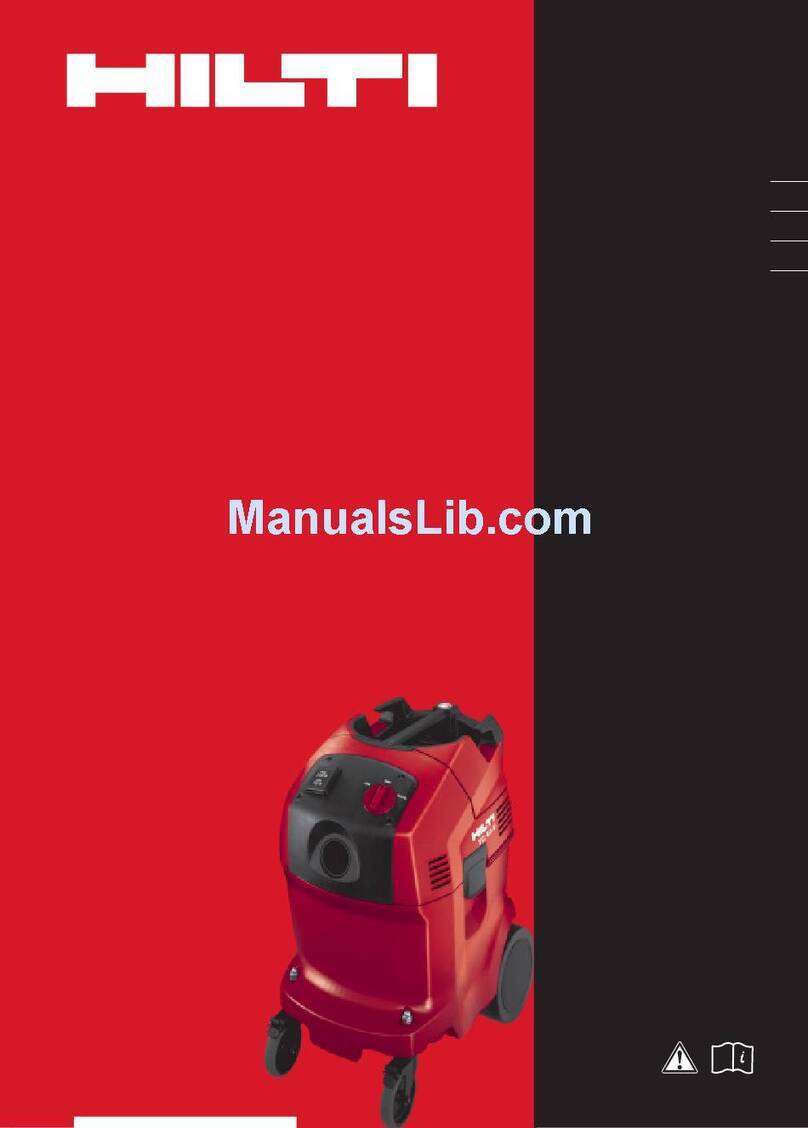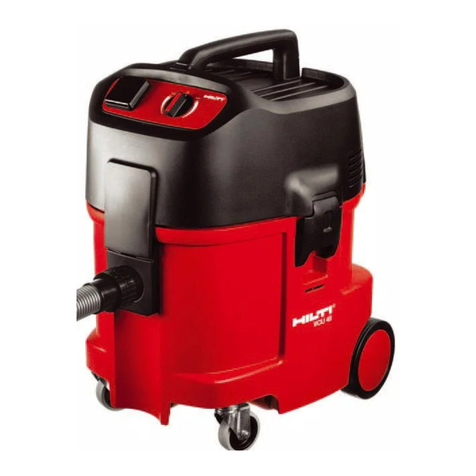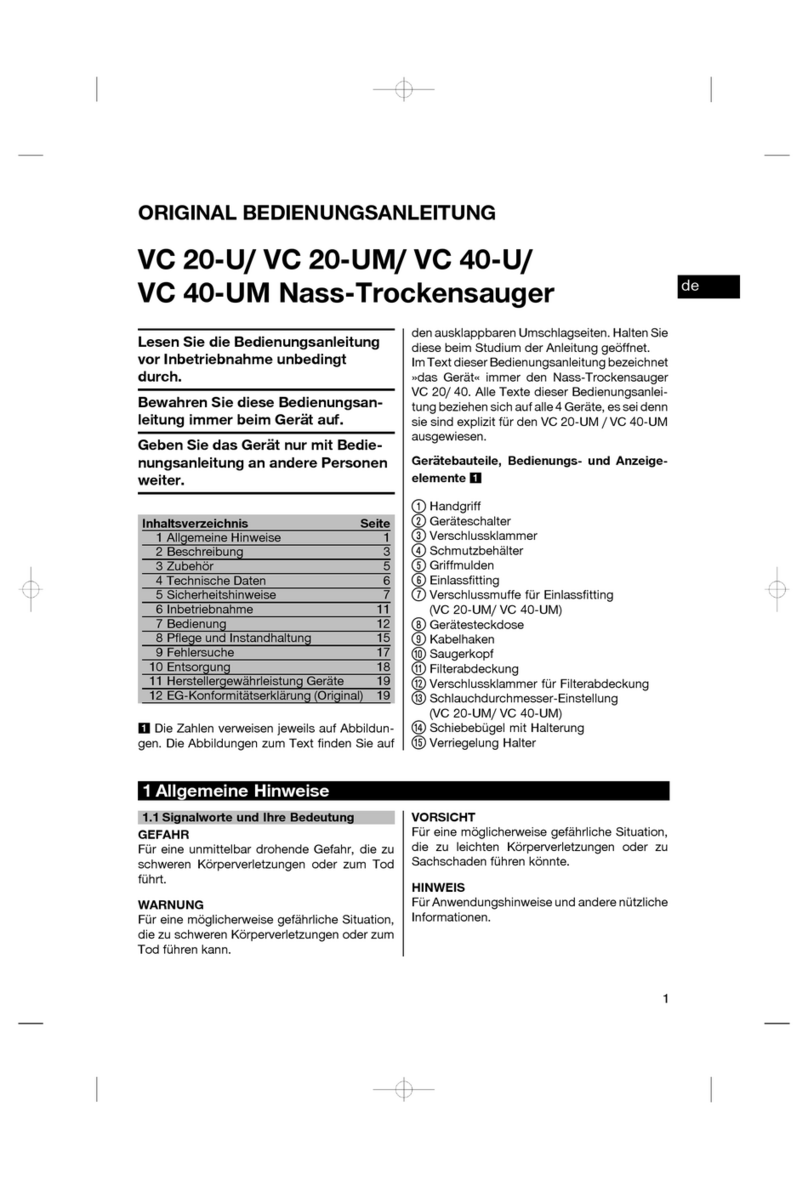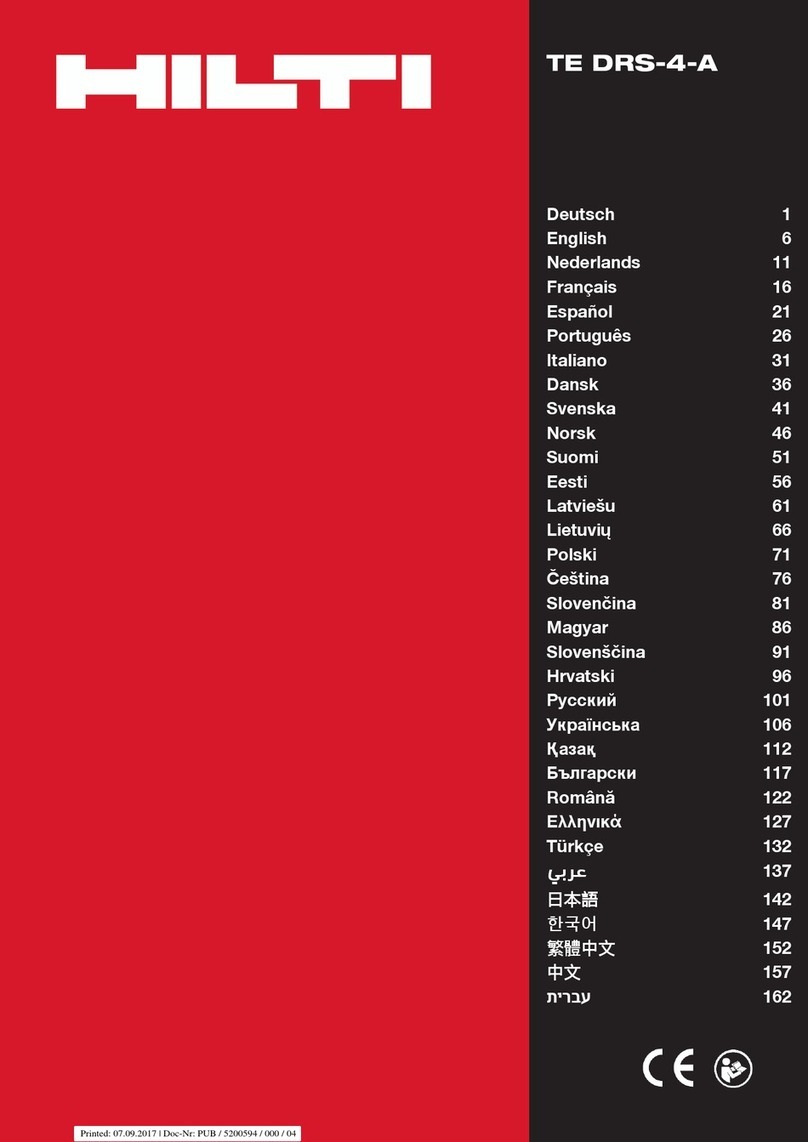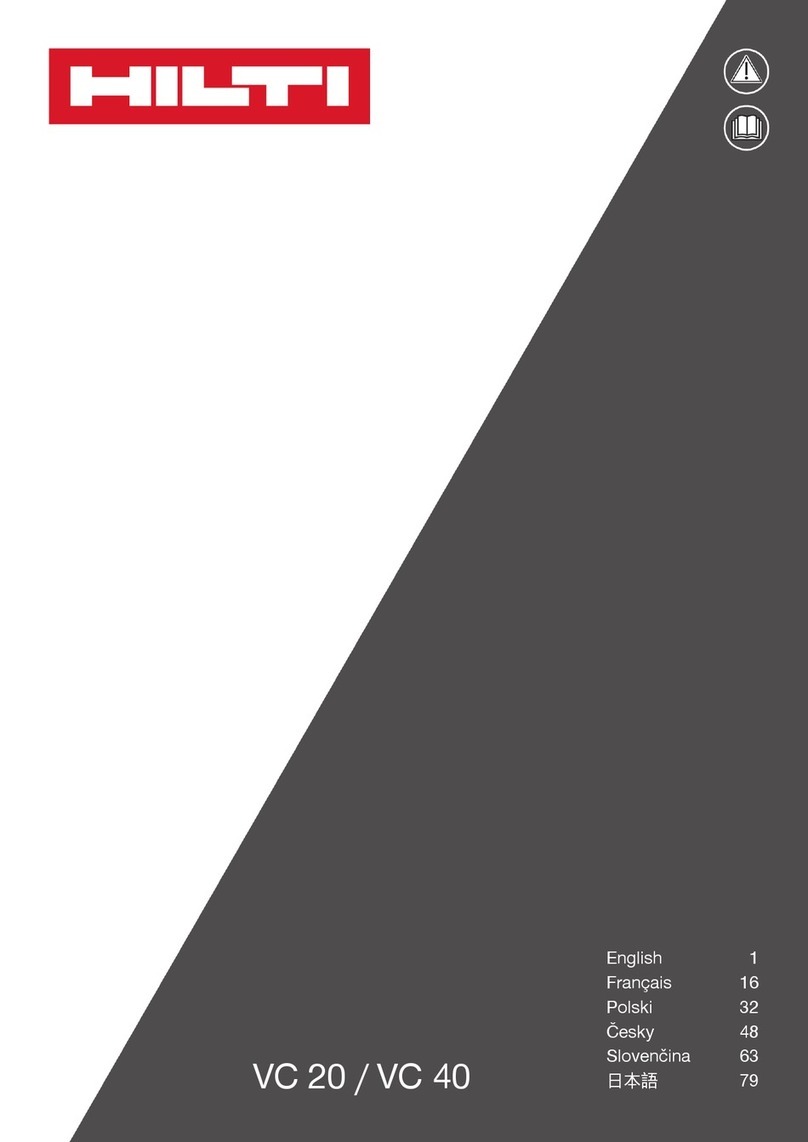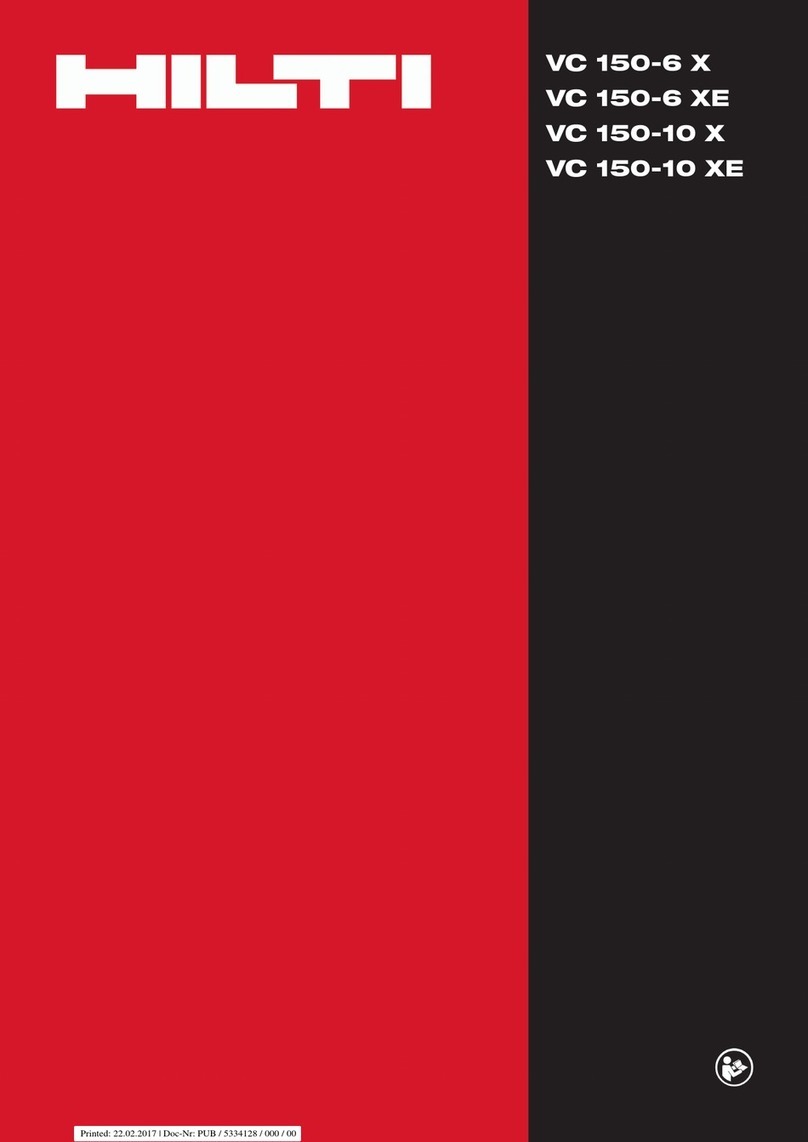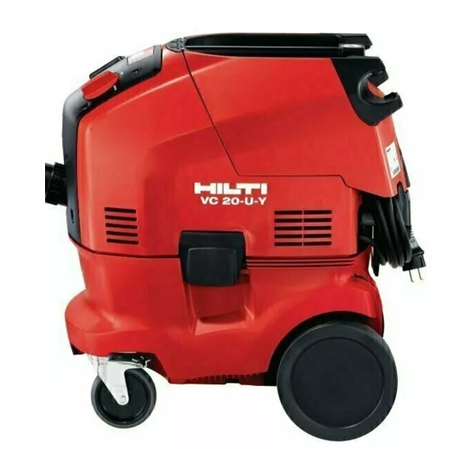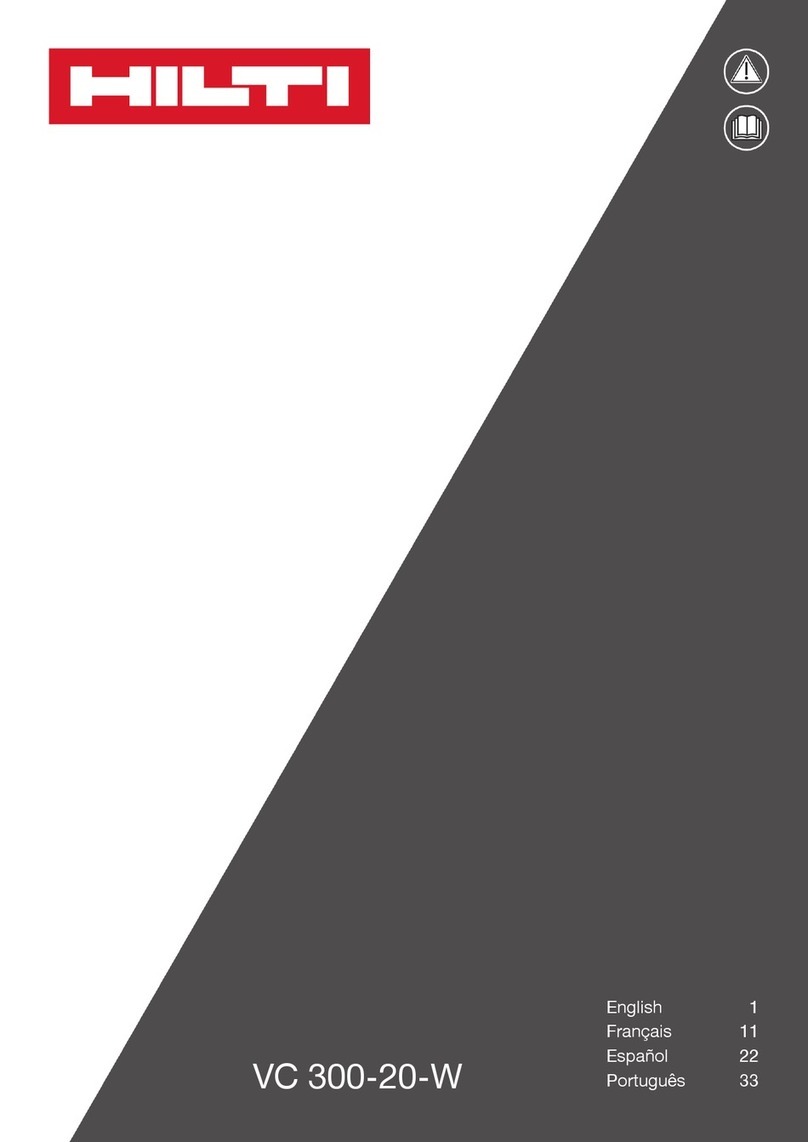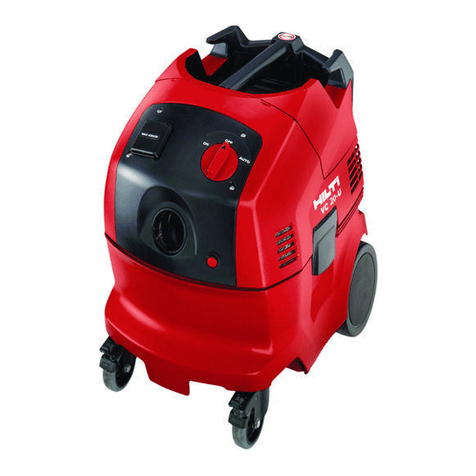
4 English 2268127 *2268127*
▶Do not deactivate the filter cleaning system when vacuuming up hazardous dusts, especially when
the appliance is used in combination with power tools that generate dust.
▶Protect the appliance from frost.
▶Clean the water level limiting device regularly with a brush, in accordance with the instructions,
and check it for signs of damage.
▶When fitting the suction head on to the vacuum cleaner, take care to avoid pinching your fingers
or damaging the supply cord. This presents a risk of injury or damage.
▶Check the appliance and its accessories for any damage. Guards, safety devices and any slightly
damaged parts must be checked carefully to ensure that they function faultlessly and as intended.
Check that moving parts function faultlessly, without sticking, and that no parts are damaged. In
order to ensure faultless operation of the appliance, all parts must be fitted correctly and must
meet the necessary requirements.
▶Have the appliance serviced by a qualified repair person using only genuine Hilti spare parts. The
safety of the appliance can thus be maintained.
▶Always unplug the supply cord from the power outlet when the appliance is not in use (during
breaks), before cleaning and maintenance and before changing the filter or accessories. This
preventive safety measure reduces the risk of starting the appliance accidentally.
▶Never pull the vacuum cleaner by the supply cord to a new working position. Do not run the wheels
of the vacuum cleaner over the supply cord.
▶Do not transport the appliance by crane.
VC 20M-X
VC 40M-X
Additionally in the case of M-class vacuum cleaners
▶Close the hose inlet socket with the cap before transporting the appliance and when it is not
in use.
2.4 Electrical safety
▶The plug on the supply cord of the appliance must match the outlet. Do not change the plug in any
way. Do not use adapter plugs with earthed (grounded) appliances. Unmodified plugs and matching
outlets reduce risk of electric shock.
▶Insert the plug in a suitable earthed/grounded power outlet which has been correctly and safely
installed and is in compliance with local regulations. If you are in doubt about the effectiveness of
the power outlet’s earth/ground connection, have it checked by a qualified specialist.
▶Avoid body contact with earthed or grounded surfaces such as pipes, radiators, cookers, stoves
and refrigerators. There is an increased risk of electric shock if your body is grounded.
▶Do not expose the appliance to rain or wet conditions. Water entering an electric appliance will
increase the risk of electric shock.
▶Check to ensure that the supply cord does not lie in a puddle of water.
▶Check the appliance’s supply cord at regular intervals and have it replaced by Hilti Service if
damage is found. Check extension cords at regular intervals and replace them if found to be
damaged.
▶Do not touch the supply cord or extension cord if they are damaged while working. Disconnect
the supply cord plug from the power outlet. Damaged supply cords or extension cords present a risk
of electric shock.
▶The electric supply cord may be replaced only with a cord of the type specified in the operating
instructions.
▶Do not abuse the cord. Never use the cord for carrying, pulling or unplugging the appliance. Keep
the cord away from heat, oil, sharp edges or moving parts. Damaged or entangled cords increase
the risk of electric shock.
▶When operating an electric appliance outdoors, use only extension cords of a type suitable for
outdoor use. Use of an extension cord suitable for outdoor use reduces the risk of electric shock.
▶In the event of an interruption in the electric supply, switch the appliance off and unplug it from
the power outlet.
▶Use the power outlet on the appliance only for the purposes described in the operating instructions.
▶Never operate the appliance when it is dirty or wet. Dust (especially dust from conductive materials)
or dampness adhering to the surface of the appliance may, under unfavorable conditions, lead to electric
shock. Dirty or dusty appliances should thus be checked by Hilti Service at regular intervals,
especially if used frequently for working on conductive materials.




